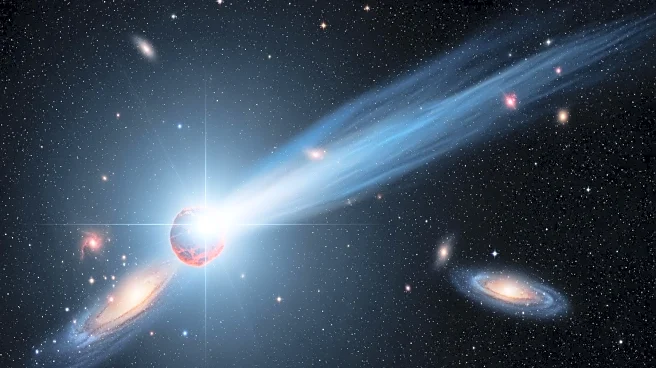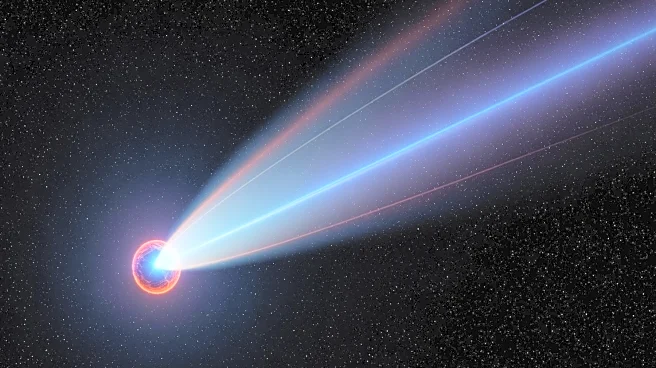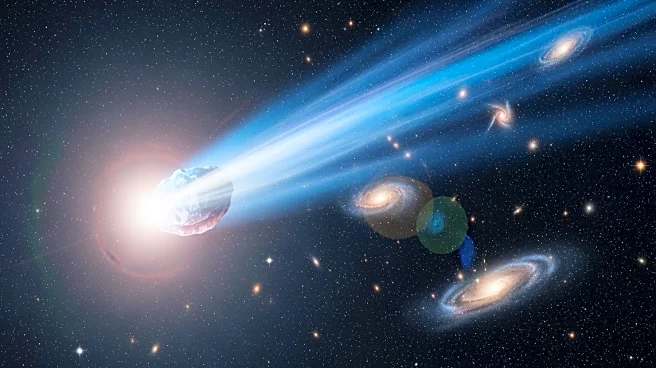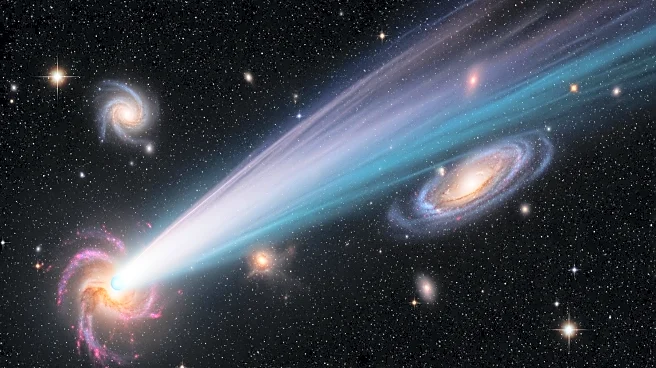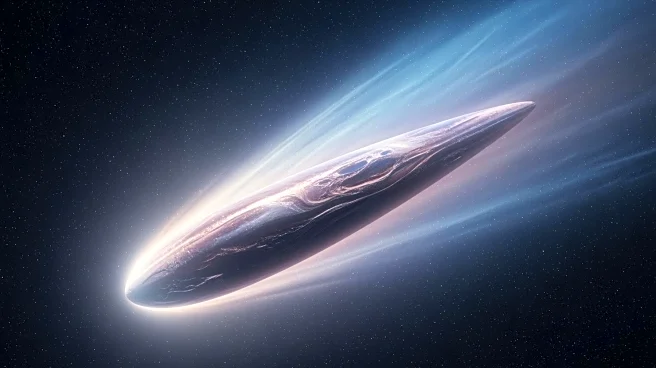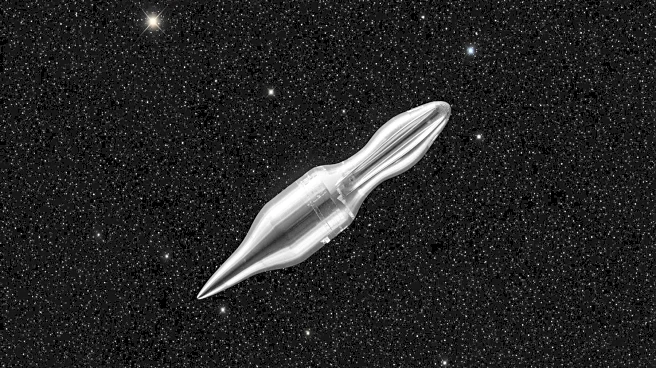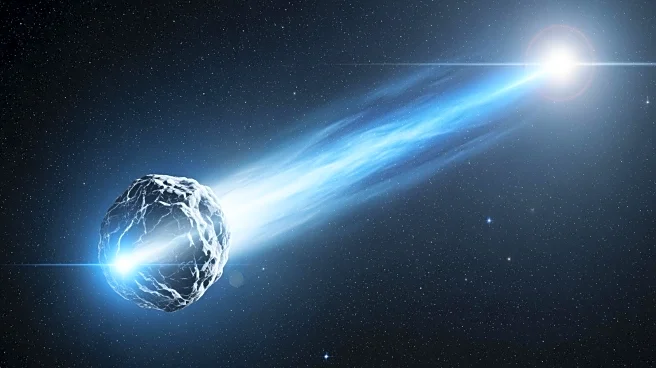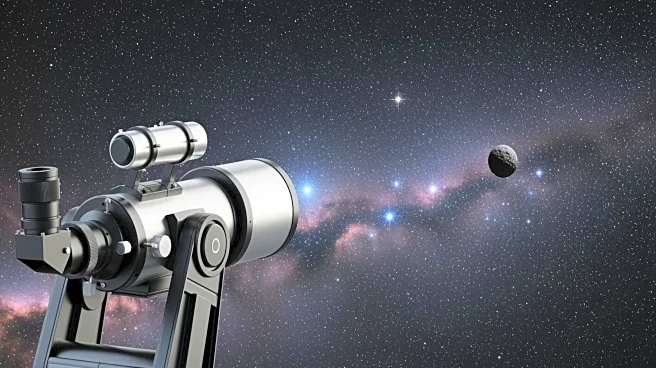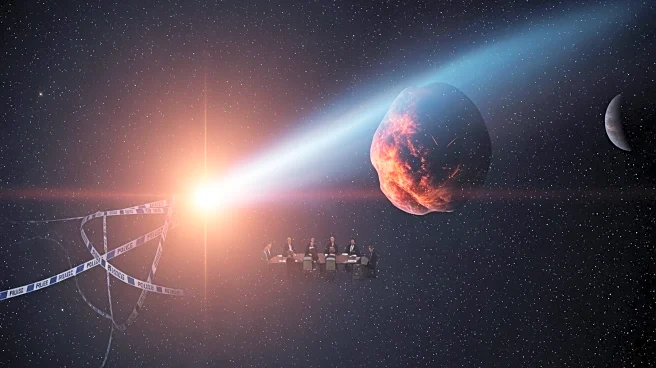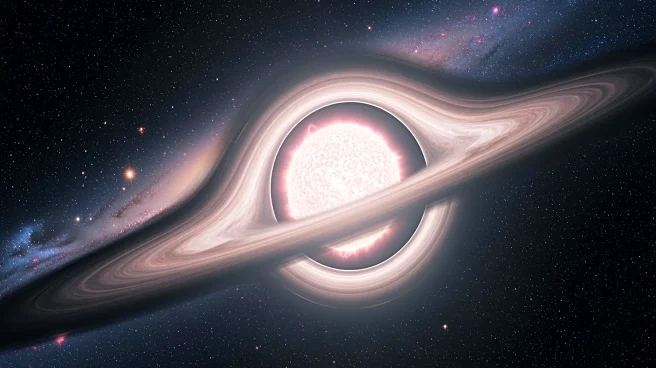What's Happening?
The interstellar comet 3I/ATLAS is nearing its closest point to the Sun, known as perihelion, on October 29. This comet, believed to originate from an unknown star system, is the third interstellar object
detected in our solar system. As it approaches the Sun, radiation heats the comet's icy nucleus, causing geysers of gas and dust to form a glowing plume around it. The comet is expected to become more active, releasing gas in overdrive, and may appear bigger and brighter when visible to telescopes again in early November.
Why It's Important?
The study of 3I/ATLAS offers a rare opportunity to gather data on interstellar objects, potentially revealing secrets about the outer reaches of our galaxy. Understanding the behavior and composition of such comets can provide insights into the formation and evolution of celestial bodies. The comet's activity as it approaches perihelion will be closely monitored by astronomers, contributing to the broader knowledge of interstellar phenomena.
What's Next?
As 3I/ATLAS reaches perihelion, astronomers will use a range of instruments to study its behavior and characteristics. Observatories on the ground and in orbit will focus on capturing detailed images and data, enhancing our understanding of interstellar comets. The comet's departure from the solar system will be tracked, providing further opportunities for research and observation.
Beyond the Headlines
The observation of 3I/ATLAS underscores the importance of international collaboration in astronomical research. The data gathered from this comet can inform future studies and missions, potentially leading to new discoveries about the universe. The comet's journey through the solar system may also inspire interest in interstellar travel and the exploration of distant star systems.
